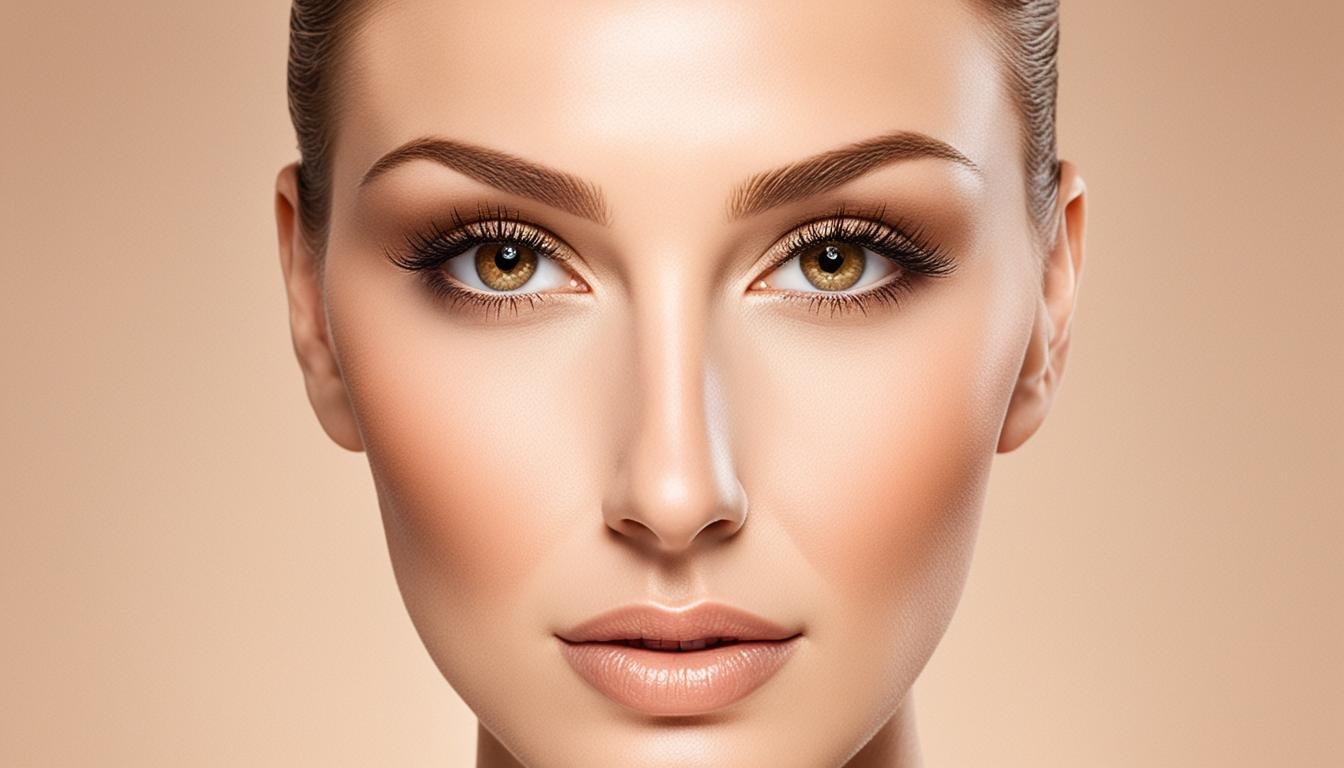Am I fair or light?
Have you ever wondered what exactly determines whether your skin tone is fair or light? Is it simply the surface color of your skin or is there something more to it? Understanding the difference between surface color and undertone is key to unraveling this mystery and finding the right foundation shade, makeup, and clothing that flatters your complexion.
When we talk about surface color, we’re referring to the hue of your skin. It can be categorized as fair, light, medium, or dark. But surface color is just the tip of the iceberg. The secret lies in your undertone, which is the subtle color that lies beneath the surface and stays constant, regardless of tanning or skin conditions. Undertones can be cool, warm, or neutral, and they play a crucial role in determining whether your skin tone is fair or light.
So, how can you figure out your surface color and undertone? And why does it matter? Let’s dive deeper into the world of skin tones to find out.
Key Takeaways:
- Your skin tone is determined by both the surface color and undertone.
- Surface color refers to the hue of your skin, such as fair, light, medium, or dark.
- Undertone is the subtle color underneath the surface and can be cool, warm, or neutral.
- Knowing your skin tone helps you choose the right foundation shade and enhance your overall appearance.
- Methods like examining your jawline, checking your veins, and observing how your skin reacts to the sun can help determine your surface color and undertone.
Determining Your Skin Tone
Determining your skin tone involves identifying your surface color, which can be fair, light, medium, or dark. Understanding your skin tone is essential for selecting the right foundation shade and achieving a flawless look. Let’s take a closer look at each surface color:
Fair Skin
Fair skin is the lightest range of skin tones. It is characterized by a delicate complexion, often with pink or rosy undertones. People with fair skin tend to burn easily and may have freckles. To determine if you have fair skin, consider the following:
- Ask a friend for their opinion on your skin tone.
- Examine your jawline in natural lighting. Fair skin tends to appear lighter compared to the rest of the body.
- Visit a beauty store and have a professional skin tone matching test.
Light Skin
Light skin falls on the lighter end of the spectrum but has warmer undertones compared to fair skin. It may have hints of yellow, peach, or golden hues. To determine if you have light skin, consider the following:
- Observe your skin’s reaction to the sun. Light skin tends to tan more easily compared to fair skin.
- Notice how colors look against your skin. Warm tones like gold, orange, or earthy shades may complement light skin.
- Try the white test. Hold a plain white piece of paper near your face and see if your skin appears more yellow or pink.
Medium Skin
Medium skin has a tan tone with warm golden or olive undertones. It falls in the middle of the spectrum and can range from light-medium to medium-dark. To determine if you have medium skin, consider the following:
- Examine the undertones of your skin. Medium skin often has a warm golden or olive hue.
- Consider how your skin tans. Medium skin tends to develop a tan with ease and has a natural sun-kissed glow.
- Look at your natural hair and eye color. Medium skin tones often complement shades of brown, hazel, or green.
Dark Skin
Dark skin is the deepest range of skin tones. It can have warm, cool, or neutral undertones. To determine if you have dark skin, consider the following:
- Examine your skin’s undertone. Dark skin tones may have warm undertones with hints of red, peach, or golden hues. In some cases, it may have cool undertones with hints of blue or purple.
- Consider your natural hair and eye color. Dark skin often complements deep browns, black, or dark hazel tones.
- Observe how colors appear against your skin. Dark skin tones can enhance vibrant or bold shades.
Understanding your surface color is the first step in determining your skin tone. Once you identify your surface color, we can move on to discovering your undertone in the next section.
| Surface Color | Description | Undertones |
|---|---|---|
| Fair Skin | The lightest range of skin tones with pink or rosy undertones. | Cool |
| Light Skin | Lighter skin with warm undertones, often yellow, peach, or golden hues. | Warm |
| Medium Skin | Tan tone with warm golden or olive undertones. | Warm or Neutral |
| Dark Skin | Deepest range of skin tones with warm, cool, or neutral undertones. | Warm, Cool, or Neutral |
Understanding Your Undertone
Your undertone is the subtle color that lies beneath the surface color of your skin. Unlike surface color, which can change with factors like tanning or skin conditions, undertone remains constant. There are three main undertones: cool, warm, and neutral.
A cool undertone is characterized by a bluish hue. If your veins appear more bluish or purple, and silver jewelry complements your complexion, you likely have a cool undertone. On the other hand, a warm undertone has a golden or peach-colored hue. If your veins appear greener, and gold jewelry enhances your skin tone, you probably have a warm undertone.
Neutral undertone is neither cool nor warm, with balanced undertones of both. It may also have an olive tint for individuals with darker skin tones. To determine your undertone, you can observe how your skin reacts to the sun. If you tend to burn easily under the sun and have a neutral undertone, you may lean toward the cool side. If you tan easily and have a neutral undertone, you may lean toward the warm side.
Determining your undertone can also involve considering what colors look good on you. If you look good in both cool and warm colors, you likely have a neutral undertone. Additionally, the white test can be useful. Hold a white cloth or piece of paper next to your face. If your complexion appears brighter and healthier against pure white, you are more likely to have a cool or neutral undertone. If your skin looks more vibrant against an off-white shade, you likely have a warm undertone.






